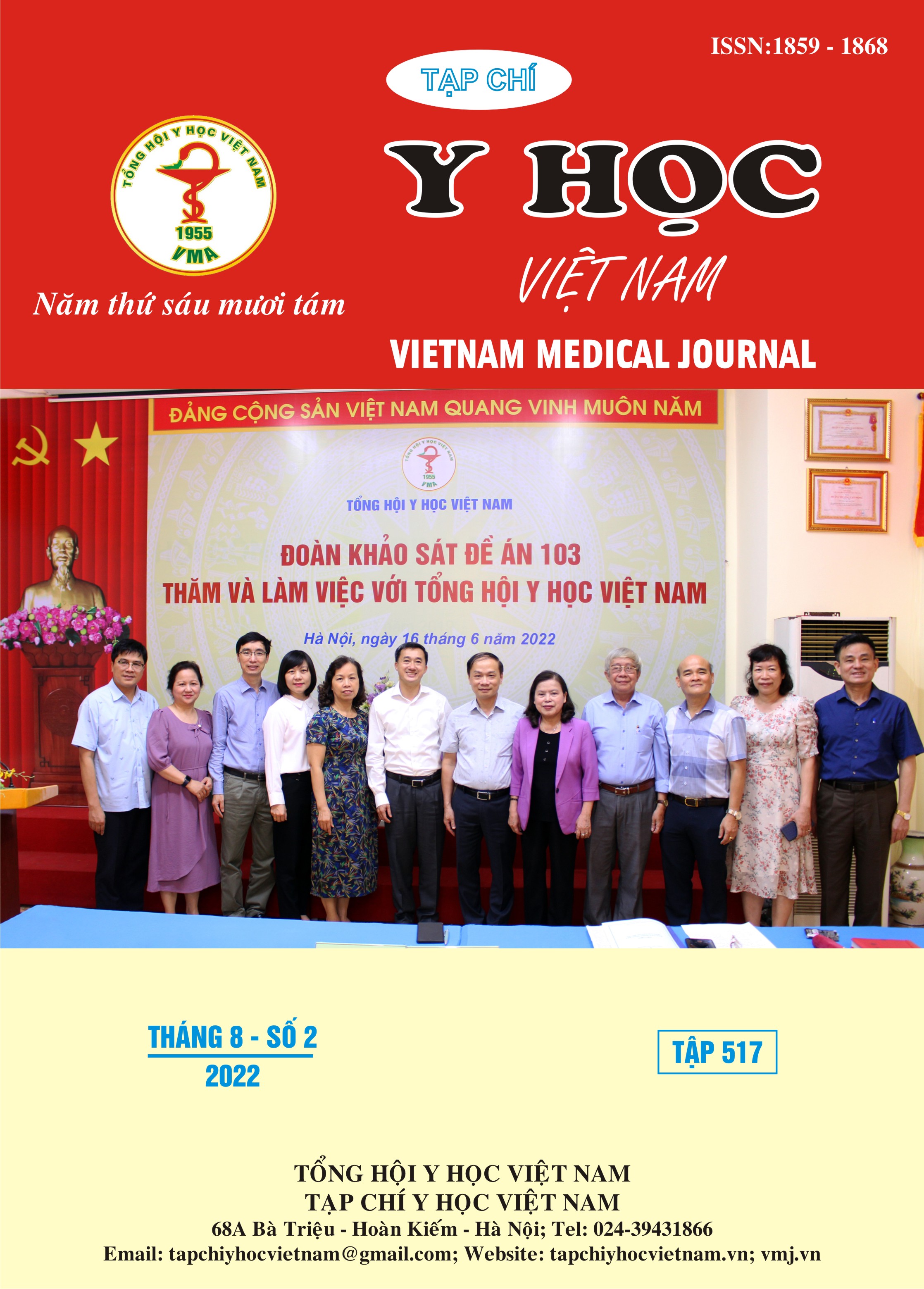VALUE OF TREC LEVELS IN THE DIAGNOSIS OF PRIMARY IMMUNODEFICIENCY IN CHILDREN
Main Article Content
Abstract
Severe combined immunodeficiency (SCID), the most severe form of T-cell immunodeficiency, causes severe infections in many organs and early death in the second years of life. The disease can be diagnosed early through quantitative testing of T cell receptor excision circles (TREC) from peripheral blood samples. Early diagnosis leads to early treatment and increased survival in patients. Objectives: To investigate the concentration of TREC in newborns and detect children at high risk of SCID at Hanoi Obstetrics and Gynecology Hospital. Subjective: 47620 children were tested for TREC, of which 12 children had high-risk TREC levels. Methods: A descriptive study with a combination of retrospective and prospective case series. Results: Median TREC concentration 104,0cp/µL. The median TREC concentration in boys was 98,3cp/µL and in girls 111,0cp/µL. TREC concentration tends to increase with gestational weeks, the highest in the group from 28 to less than 32 weeks of gestation: the median value is 113,0cp/µL. Eight out of 12 children with TREC screening results < 24cp/µL, who came to the Vietnam National Children’s Hospital, 2 patients were diagnosed with SCID by genetic analysis, equivalent to the rate SCID in the study population 4,2/100000 live births. Conclusion: SCID screening by quantitative TREC test method is an effective method, helping to detect high-risk patients early, and should be widely implemented.
Article Details
References
2. Puck J.M. (2019). Newborn screening for severe combined immunodeficiency and T-cell lymphopenia. Immunol Rev, 287(1), 241–252.
3. Clinical and economic aspects of newborn screening for severe combined immunodeficiency: DEPISTREC study results - PubMed. , accessed: 14/07/2022.
4. Kwan A., Abraham R.S., Currier R. và cộng sự. (2014). Newborn screening for severe combined immunodeficiency in 11 screening programs in the United States. JAMA, 312(7), 729–738.
5. Chien Y.-H., Chiang S.-C., Chang K.-L. và cộng sự. (2015). Incidence of severe combined immunodeficiency through newborn screening in a Chinese population. J Formos Med Assoc Taiwan Yi Zhi, 114(1), 12–16.
6. Douek D.C., McFarland R.D., Keiser P.H. và cộng sự. (1998). Changes in thymic function with age and during the treatment of HIV infection. Nature, 396(6712), 690–695.
7. Rechavi E., Lev A., Lee Y.N. và cộng sự. (2015). Timely and spatially regulated maturation of B and T cell repertoire during human fetal development. Sci Transl Med, 7(276), 276ra25.
8. Rechavi E., Lev A., Simon A.J. và cộng sự. (2017). First Year of Israeli Newborn Screening for Severe Combined Immunodeficiency-Clinical Achievements and Insights. Front Immunol, 8, 1448.
9. Argudo-Ramírez A., Martín-Nalda A., Marín-Soria J.L. và cộng sự. (2019). First Universal Newborn Screening Program for Severe Combined Immunodeficiency in Europe. Two-Years’ Experience in Catalonia (Spain). Front Immunol, 10, 2406.
10. Puck J.M. (2011). Neonatal screening for severe combined immunodeficiency. Curr Opin Pediatr, 23(6), 667–673.


